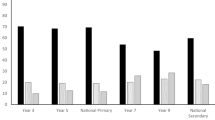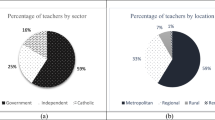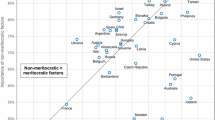Abstract
Conventional wisdom says that reforms that aim at improving the productivity of the public sector face opposition from public sector employees, and for this reason, tend to be poorly implemented. These claims are not backed by much hard evidence. This paper seeks to fill some of that gap by investigating why an educational reform containing explicit accountability elements is poorly implemented across Norwegian municipalities about four years after the reform has passed the parliament. The empirical analyses provide evidence that municipalities with a large share of public employees are less likely to implement the reform. The relationship seems to be causal. A reduced-form approach is applied, which prevents conclusions about the mechanisms through which the public employees exercise their influence. However, some preliminary analyses indicate that school leaders hold more negative attitudes towards the reform in municipalities with a large share of public employees, potentially indicating that regulatory capture is an issue: school leaders tend to sympathize more strongly with teachers in such environments.



Similar content being viewed by others
References
Alesina, A., & Drazen, A. (1991). Why are stabilizations delayed? American Economic Review, 81, 1170–1188.
Christoffersen, H., & Paldam, M. (2003). Markets and municipalities: a study of the behavior of the Danish municipalities. Public Choice, 114, 79–102.
Coughlin, P., Mueller, D., & Murrell, P. (1990). Electoral politics, interest groups, and the size of government. Economic Inquiry, 28, 682–705.
Dal Bo, E. (2006). Regulatory capture: a review. Oxford Review of Economic Policy 22, 203–225.
Dubin, A., & Navarro, P. (1988). How markets for impure public goods organize: the case of household refuse collection. Journal of Law, Economics and Organization, 4, 217–241.
Hanushek, E. A., & Raymond, M. (2005). Does school accountability lead to improved student performance? Journal of Policy Analysis and Management, 24(2), 297–327.
Hjetland, H. (2009). Convention speech, the Education Association.
Laffont, J.-J., & Tirole, J. (1993). A theory of incentives in procurement and regulation. Cambridge: MIT Press.
Lopez-de-Silanes, F., Schleifer, A., & Vishny, R. (1997). Privatization in the United States. Rand Journal of Economics, 28, 447–471.
Margo, R. A., & Finegan, T. A. (1996). Compulsory schooling legislation and school attendance in turn-of-the century America: a natural experiment approach. Economics Letters, 53(1), 103–110.
Meghir, C., & Palme, M. (2005). Educational reform, ability and parental background. American Economic Review, 95(1), 414–424.
Moe, T. (2003). The politics of the status quo. In P. E. Peterson (Ed.), Our schools and our future: are we still at risk? Stanford: Hoover Press.
Rattsø, J., & Sørensen, R. J. (2004). Public employees as swing voters: empirical evidence on opposition to public reform. Public Choice, 119, 281–310.
Sandstrøm, F. M., & Bergstrøm, F. (2005). School vouchers in practice: competition will not hurt you. Journal of Public Economics, 89, 351–380.
Stigler, G. J. (1971). The theory of economic regulation. Bell Journal of Economics and Management Science, 3, 3–18.
Strøm, B., Borge, L.-E., & Haugsbakken, H. (2009). Time-use and organization in the elementary school (Report no. 04/09). Center for Economic Research.
Sørensen, R., & Bay, A.-H. (2002). Competitive tendering in the welfare state: perceptions and preferences among local politicians. Scandinavian Political Studies, 2, 357–384.
Tiebout, C. (1956). A pure theory of local expenditures. Journal of Political Economy, 64(5), 416–424.
Tirole, J. (1986). Hierarchies and bureaucracies: on the role of collusion in organizations. Journal of Law, Economics and Organization, 2(2), 181–214.
Acknowledgements
I wish to thank two anonymous referees, the editor of this journal, and participants at the Economics of Education Conference at CESifo 2011 for valuable comments, and the Norwegian Social Science Data Services for providing data on municipality characteristics. This paper builds on the master thesis of Ellen Bakken. Her work with these data is highly appreciated. This research is part of the project “Governance, Management and Performance in the Norwegian Educational System,” which was financed by the Norwegian Research Council.
Author information
Authors and Affiliations
Corresponding author
Appendix: The survey questions used for the construction of the reform-implementation index
Appendix: The survey questions used for the construction of the reform-implementation index
The reform implementation index has two main components:
-
A decentralization-of-decisions index
-
A degree-of-accountability index
The decentralization index is based on the following two blocks of questions to the local council:
-
1.
How free are your elementary school leaders to decide on the following issues within the budget restriction of: the number of teacher man-years, the number of assistant man-years, the number of special education man-years, the allocation of teacher man-years across grades, the allocation of assistant man-years across grades, the allocation of special resources across grades, the allocation of money across teacher man-years and support staff (“Labor inputs”)?
-
2.
To what degree can the school leaders decide on: the class and group organization, teaching methods, curriculum, targeted areas, innovation activities, pedagogical issues, development of teacher skills (“Organization and innovation”)?
The answers to the total of 14 questions are added to generate an overall decentralization index:
Variable | Obs | Mean | Std. Dev. |
|---|---|---|---|
Labor inputs | 256 | 25.52 | 7.10 |
Organization and innovation | 263 | 28.95 | 3.99 |
Decentralization | 251 | 54.64 | 9.29 |
The accountability index is based on the following three questions to the local council:
-
1.
Do the contracts with the school leaders contain a number of agreed upon common goals for the school activities (“Common goals”)?
-
2.
Does the local council carry out systematic evaluations of the school leaders (“Systematic evaluations”)?
-
3.
Does the local council use student test information as part of the school leader evaluations (“Test information”)?
Variable
Obs
Mean
Std. Dev.
Common goals
269
0.33
0.47
Systematic evaluations
269
0.35
0.48
Test information
269
2.23
1.14
The answers to the three questions are weighted together as described in the main body of the paper. Thereafter, the reform implementation index is generated by first standardizing the decentralization and the accountability indices, then adding and then standardizing once more.
Rights and permissions
About this article
Cite this article
Bonesrønning, H. Public employees and public sector reform implementation. Public Choice 156, 309–327 (2013). https://doi.org/10.1007/s11127-011-9900-1
Received:
Accepted:
Published:
Issue Date:
DOI: https://doi.org/10.1007/s11127-011-9900-1




